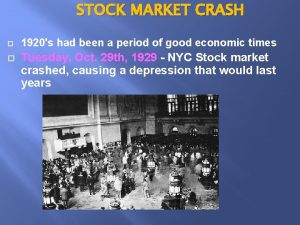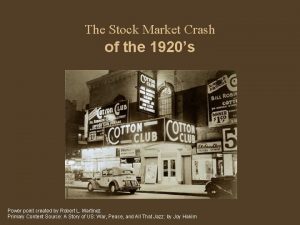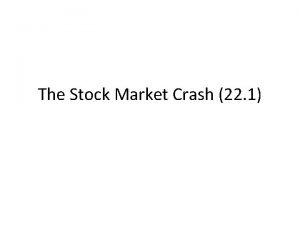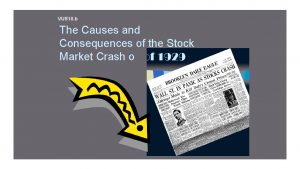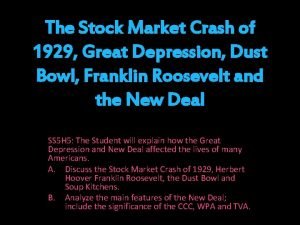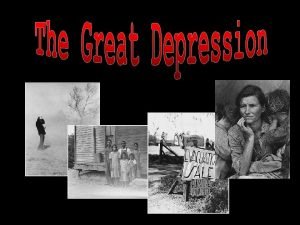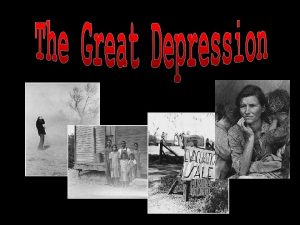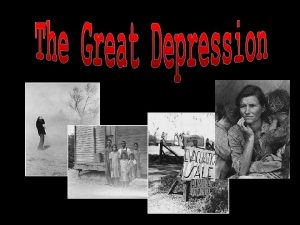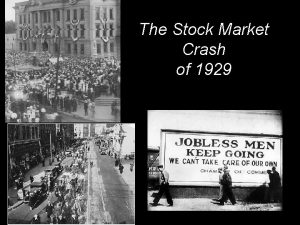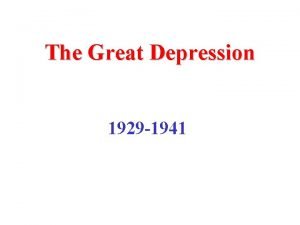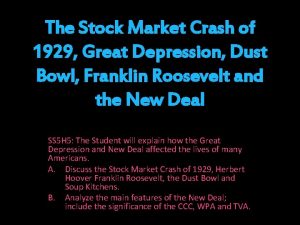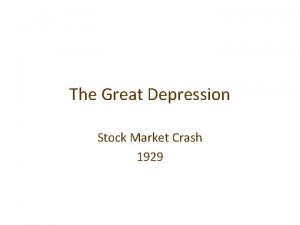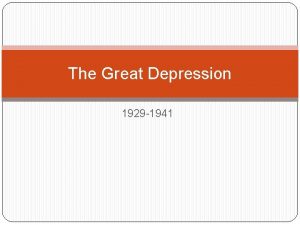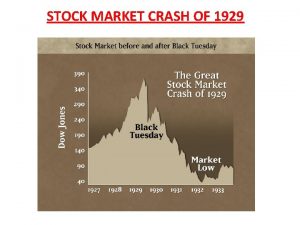The Stock Market Crash The Great Crash 1929











- Slides: 11

The Stock Market Crash


The Great Crash 1929: Without new customers the bull market couldn’t continue. -Sept: Professional investors sensed danger and began selling off their holdings. Result: prices slipped Other investors sold shares to pay the interest on their brokerage loans. Result: prices fell further

CRASH of 1929! Monday October 21: Frightened customers sold stocks at a frenzied pace when margins were called in. • Result: market went into a tailspin October 24 “Black Thursday”: Market plummeted further October 29 “Black Tuesday”: Prices took the steepest dive. Stocks lost $10 to $15 billion in value. Mid-November: Stocks had dropped by over one-third. $30 billion was lost (equivalent to the amount earned by Americans in 1929). Significance: The stock market crash undermined the economy’s ability to hold out against its other weaknesses.

(left side) Song Analysis- “Brother, Can you Spare a Dime” Written in 1931 by lyricist E. Y. "Yip" Harburg and composer Jay Gorney, 1) Stanza 1: Who is “they? ” 2) Stanza 1: What do you think the “dream” represents? 3) Stanza 2: What does the railroad and tower represent? 4) Stanza 3: What historical event is being mentioned? 5) How does this song describe the treatment of this American?

Financial Collapse

Bank Failures • When the stock market crashed, people could not repay their loans to the bank. • Therefore, banks couldn’t give depositors their money and banks closed. • Many people lost their life savings.

I need to get my money!

Banks in a Tailspin – Scenario 1: Many banks had lent money to stock speculators – Result 1: After experiencing losses, many banks cut back drastically on the loans they made. With less credit available, consumers and businesses were unable to borrow as much money as they had previously. Result: Recession – Scenario 2: Many banks had invested depositors’ money in the stock market, hoping for higher returns than they could get by using the money for conventional loans. • When stocks dropped, the banks lost money on their investments and the speculators defaulted on their loans. – Result 2: Some banks closed due to losses. The govt didn’t insure bank deposits SO customers lost their savings! This caused a crisis of confidence in the banking system. People made runs on their banks so more banks collapsed b/c banks didn’t have enough money available. 3, 000 banks closed during the first two years of the depression (10% of US banks)


Police stand guard outside the entrance to New York's closed World Exchange Bank, March 20, 1931



